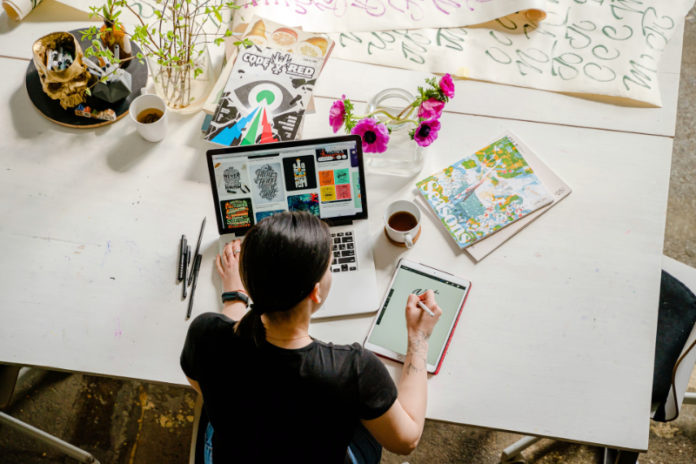In the hierarchy of establishments given the green light to operate during the pandemic, first were the essential services, such as supermarkets, drug stores, and banks.
Meanwhile, arts and culture sat at the bottom, so cinemas, theatres, zoos, and museums remained closed for a while. During the prolonged lockdown, however, organisations came up with creative strategies to revolutionise their offerings. Assisted by the latest technology involving design and augmented reality (AR), for example, they discovered ways to be closer to their audiences.
One such organisation is Singapore’s Mandai Wildlife Group (MWG), which is seeking to extend the wildlife experience beyond the zoo.
“We’ve been toying with the idea of closeness for a long while,” shared Belina Lee, Chief Strategy and Innovation Officer for MWG. “You don’t protect something that you do not love. A lot of people don’t care about wildlife, because there’s no emotional connection, there’s no emotional affinity. So content plays a really important part. And physical experiences also play an important part in first building that closeness. In terms of physical closeness, we’re very happy to share that the rejuvenation of the Mandai is coming along very nicely. So we are scaling impact-immersive wildlife experiences.”
Modern creativity
Lee was among the speakers during the “Creativity, Transformation, and their Impact on Culture” panel, organised by Jicara Media and hosted by Adobe, which explored the intersection of technology, creativity, and culture.
For her, technology has enabled MWG to provide a brand new wildlife experience to their visitors.
“We are leveraging the power of digital and virtual (technology), and harnessing the combination of digital gamification and storytelling, whereby an experience to the zoo is not just ‘I’m coming to see animals,’ (but also) overlaying it with interesting content layers, which would make every visit personalised and interesting, with a gamified component,” she said.
Meanwhile, Simon Dale, Managing Director SEA, Adobe, explained how technology is enabling creatives to harness their full potential, giving birth to countless innovations.
“We see continual improvements through not just (with) our engineering work, but also (with) our artificial intelligence, (which is) getting more powerful. All of these things are helping us to first of all, increase the productivity of creatives to remove some of the mundane work, so that people can spend more time thinking about that creative process, applying that in the tools, (and) getting rid of some of the laborious work in terms of modifying that creation,” he said.
“What we’re seeing out of Adobe MAX (conference) this year, are features like being able to use our products more on the web, without having to download software. It’s reducing the barriers for people to be involved in the creative process, which means that more people can be involved. More of this workflow approach, more of the collaboration, when we’re talking about digital content flowing through business processes. In particular, having more people involved in that process, being able to comment on it, and having access to the technology in a lightweight fashion, mean that there’s more empowerment in the creative process, more involvement— so that collaboration is a big key element to it,” he added.
Content creation
To further its vision of “inspiring people to value and conserve biodiversity” amid the pandemic, MWG has leveraged design to transform its business, through extending the learning experience right into the homes of children in Singapore, and other parts of the world as well.
To be able to produce digital content, MWG needed people to shoot footage within the zoo. Surprisingly, the answer was already within their walls.
“About two years ago, instead of building up a digital content team at scale, instead of hiring big agencies to come help us, we had this idea of, ‘Hey, what if every single zookeeper was a content creator?’ And we actually conceptualised and launched a pilot for the world’s first zookeeper content creation app,” Lee shared.
“And you know, pictures like you see now— all come from our keepers, because they see and capture priceless moments, all the time, which we may not have the opportunity to. And to that, suddenly we have 250 keepers who are creating content, capturing content. And we are leveraging that for various channels— social media, websites, and all that good stuff,” she added.
To determine the content they would release, Lee said they employ a combination of technology and consumer interviews, banking on each component to complement each other.
“We basically test the content with users every single day, whether it’s on social media (or) through the various analytical tools that we get. But I think a lot has been said about big data and analytics, and I just wanted to spend a little bit of time on what we call tick data, right? That’s motivational data, and you can’t get that from numbers. Numbers don’t tell you motivation. Numbers tell you the patterns, the behaviours, but they don’t tell you the why. And so we complement the data with a deep understanding of the why. My team, myself, we’re just constantly interviewing, talking to real-life consumers, who are our target audience, to really try to understand the impediments and the motivations. And that’s really what guides us as (we) continue to create,” she explained.
For Dale, the creative community at large will benefit from leveraging big data.
“By getting an insight of your customer needs, you capture a lot of data. And I think (with) the bandwidth that’s available, the ability to consume and process this data and use it with machine learning to produce some smart insights is getting to a point of critical mass, and is becoming available to everybody at scale. So that’s a big, big one for us in terms of maturing tech, which has been emerging for a long time,” he said.
On the flipside, the lack of access to technology in certain parts of the globe is creating gaps in creativity, noted Yudesh Soobrayan, Head of Tech Innovation at global innovation consultancy Palo IT.
“When you think about emerging countries, and the ability for them to sort of share some of their content, it’s quite difficult. I come from South Africa, so it’s not so bad. But in the rest of Africa, access to technology is a problem, still in 2022. But from a content protection, IP protection point of view, I think there’s also (the) existence of exploitation in these markets, especially, for producers from sort of emerging nations. We did some stuff to try and sort of prevent this. We use SSI sometimes, and we’ve prototyped this with a community e-commerce so that everyone is onboarded (and) is completely protected by a verifiable credential. By induction, it wasn’t great. It’s a POC (proof of content), and we (are) still looking for people to take it and use it. Based on our research, we think that’s a massive problem. It’s not just with creativity, it’s also just with production in general of various things,” he said.
Into the future
To empower content creators, Adobe demonstrated the use of its Dimension and Aero programs, which are used to create AR experiences.
“If you are using Dimension for the first time, what you do is you have some starter 3D assets. You should be able to bring in any kind of model. All you need to do is just click on it, and the model will appear right on the platform. Then you should be able to go back and rotate this, and you should be able to see in all three different sides,” explained Nelson John, Senior Solutions Consultant for Adobe Digital Media, SEA.
“You can bring in any 3D object and it is good for AR, it’s good for packaging. If you’re looking at doing that, it’s a great way of doing that. But what we intend to do next is take this object and bring it to Aero so that you can bring it out and play with it,” he added.
For MWG’s Belina Lee, technology has been a huge benefit to the creative process, bringing the tools right in the fingertips of content creators.
“It used to be that content creation (required) immediate higher agency, or (you) needed to (have a) very specialised skill set. So I think it’s really democratised the ability for anyone with a simple device to be able to create content. And that’s really been able to scale. I think it’s a wonderful thing to have happened. And, of course, that’s always a good thing, when you have more access to such capabilities,” she said.
Meanwhile, Adobe’s Simon Dale believed that with more people using these new technologies, a more diverse creative community is formed, indicative of a thriving culture.
“I think creativity will always stand out, if it’s given the opportunity to be properly promoted. And I think that’s why democratising access to the technology will enable more people to come on, and should increase diversity as well. That should avoid everything becoming too much of a monoculture. I think (that’s) what we’ve done with some of our releases, in terms of getting the tools more accessible,” he said.
Lastly, Palo IT’s Yudesh Soobrayan pointed out that although templates made things easier for content creators, there is no foreseeable risk of a monoculture being created.
“At the end of the day, I think they (content creators) all vary somewhat based on their approach. And it’s how they use the technology, and how they use their creativity with the tools given to them to create something unique. Everybody does it. That’s the beauty of technology,” he concluded.
















